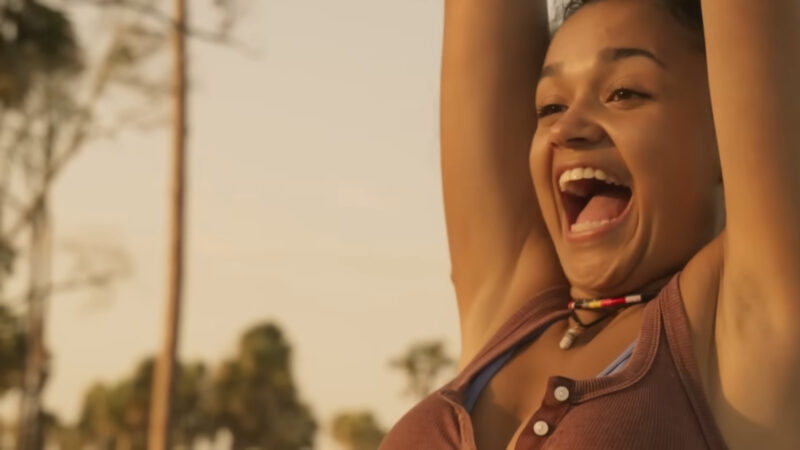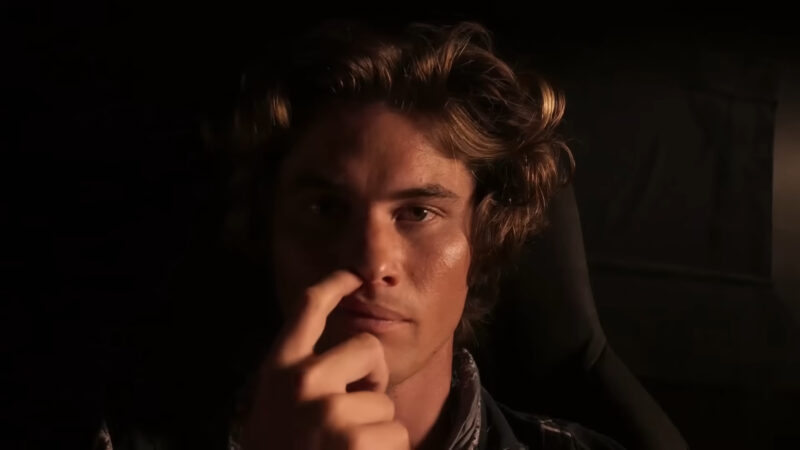“Outer Banks” is a popular Netflix series that appeals to teens and young adults with its thrilling plot, rebellious characters, and high-stakes treasure hunts.
The show’s mature themes, class-based tensions, and sometimes intense violence have raised concerns, particularly for parents wondering if it is appropriate for their teenagers.
That is why we will discuss various aspects of the show, including its TV-MA rating, themes of adult supervision, and more.
1. The Show’s TV-MA Rating and Adult Themes
Outer Banks holds a TV-MA rating, indicating that it is intended for mature audiences.
Although the main characters are teens, the show covers several adult themes that set it apart from other youth-oriented adventure series.
Viewers will encounter strong language used frequently throughout the episodes, often in emotionally charged or violent moments.
The show also portrays romantic encounters that, while not explicit, venture into suggestive dialogue and situations, giving it a more mature tone.
Another key component of the adult themes is the depiction of risky behaviors. Characters are seen drinking alcohol and using drugs, despite being underage.
The show doesn’t shy away from showing these activities in a realistic light, which could be jarring for viewers expecting a more lighthearted teen drama.
Physical violence occurs frequently, whether through fistfights or even the use of firearms.
These elements contribute to the show’s dark, intense atmosphere, making it clear that this series isn’t aimed at younger audiences, even though the characters are of high school age.
2. Lack of Parental Supervision

A significant aspect of Outer Banks is the glaring absence of parental supervision throughout the series.
The teenage characters are left to navigate a world of dangerous and illegal activities, with little to no intervention from adults.
It contributes to the overall feeling of unbridled freedom the teens experience as they pursue their high-stakes adventures.
This lack of adult presence has implications for the show’s teen viewers.
In many ways, it creates a world where young people operate without boundaries, consequences, or guidance.
While this element adds to the drama and excitement of the plot, it also paints an unrealistic portrayal of what teenage independence looks like in the real world.
Parents may find themselves concerned that this depiction could influence younger viewers, creating an idealized version of life without oversight, where risky behaviors don’t carry lasting consequences.
3. Class Divide: Pogues vs. Kooks
- The Pogues
- The Kooks
The Pogues, representing the working-class underdogs, often clash with the Kooks, who symbolize the town’s wealthy elite.
This class division is central to the series, driving much of the drama and tension between characters.
The divide not only fuels personal conflicts but also reflects larger socio-economic struggles.
Rivalry between these groups often escalates into physical violence, as the stakes of their treasure hunt increase.
The depiction of these class issues offers a glimpse into the broader themes of social inequality and justice, which are woven throughout the narrative.
The series doesn’t shy away from portraying the consequences of these conflicts, often making them a central focus of its plot twists and character dynamics.
4. Romantic and Sexual Content

Outer Banks also delves into teen relationships and romance, adding another layer to the series.
- Suggestive dialogue
- Intimacy
- Occasional steamy moment
These scenes rarely go beyond kissing or touching, but the emotions involved and the conversations around relationships give the show a more mature edge.
The romantic subplots are integrated into the broader storyline, contributing to the character’s development and the overall tension of the show.
These relationships are often complicated by the characters’ dangerous lifestyles, class differences, and personal struggles.
They also face moral dilemmas and emotional hardships that add complexity to their relationships.
Although the series doesn’t venture into graphic sexual content, parents might want to consider whether these romantic elements align with the comfort levels of younger viewers.
5. Adventure, Mystery, and Violence
The core plot of Outer Banks revolves around an intense treasure hunt, with real stakes involved.
The pursuit of hidden gold, tied to the main character’s missing father, leads the group of teens into a world of danger.
Guns, fistfights, and daring escapes are common as the treasure hunt escalates.
This constant undercurrent of adventure keeps the show fast-paced and thrilling.
However, the violence is ever-present, sometimes leaving characters injured or emotionally scarred.
The teens face increasingly difficult moral choices, adding depth to the action-packed plot.
The combination of mystery and violence creates a tense atmosphere that keeps viewers on edge throughout the series, but it also means that the emotional intensity can become overwhelming, especially for younger or more sensitive audiences.

Summary
Outer Banks is a gripping show that mixes adventure, class conflict, romance, and mystery.
Its mature themes and absence of parental figures set it apart from typical teen dramas, making it a unique viewing experience.
However, the show’s intense plot and risky behaviors are something that parents and younger viewers should approach with caution.

